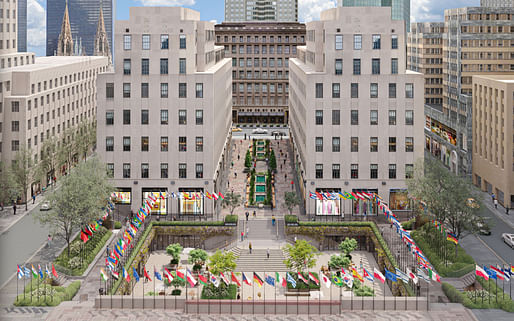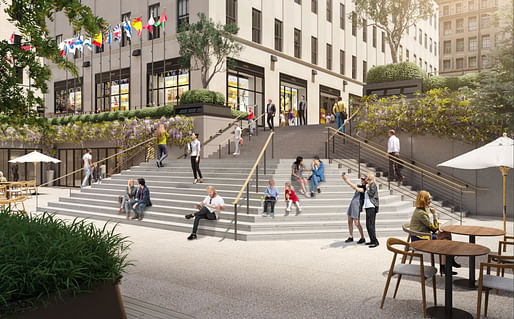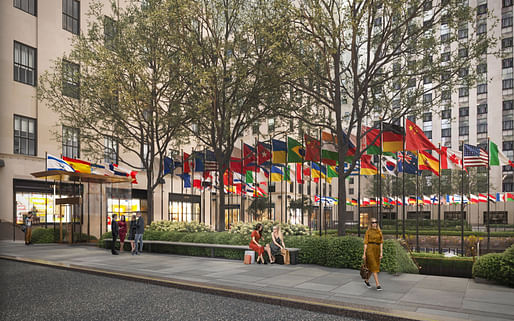

Architects Gabellini Sheppard Associates and developers Tishman Speyer have unveiled a series of substantial changes for the outdoor public realm areas associated with the Rockefeller Center complex in New York City.
The proposal, presented to the city's Landmarks Preservation Commission last week, aims to improve pedestrian circulation and visibility throughout the iconic sunken plaza and surrounding areas by adding new stair configurations, upgrading the storefronts that currently line the plaza with a ribbon of operable doors, relocating several statues, and repaving the terraces overlooking the sunken court to make them more wheelchair accessible.
The 19-building Rockefeller Center complex was originally designed in the 1930s by architect Raymond Hood, the designer behind the Chicago Tribune Tower and other notable early 20th Century skyscrapers. The complex was built in parts, with the majority of the core complex completed by 1939 while other portions of the district came online during the 1940s and 1950s.

The plan renovation plan under consideration would offer up a wide selection of subtle tweaks that keep to the site's Art Deco and Moderne stylings, including shaving off the top foot or so of the marble banisters that flank the opposing staircases that lead down to the plaza. The change would allow for the addition of a temporary assembly stair configuration to be added to the staircases during the summer—when the skating rink is not installed—that would make the space more hospitable and generous for its occupants. This design would help bring the stair configuration back to a state similar to what it looked like when the complex was first built.

Several of the sheet stone-clad knee-walls that frame the North and South Gardens flanking the sunken plaza will be removed as well, to be replaced with hedge-filled gardens that improve lines of sight from the terraces down into the plaza. These areas will also receive new access stairs and elevators leading from ground level to the indoor "concourse level" surrounding the sunken plaza. The elevators, according to the potential plans, would be wrapped in decorative art displays and billboards that could potentially host advertising, a detail preservationists have spoken out against.
Along the sloping concourse that leads to the sunken plaza, where a series of statues and fountains are located, the architects propose converting each reflecting pool into a skylight for the spaces below by replacing the existing the glass blocks that line the pools with structural glass panel assemblies.
The plan has yet to be formally approved.
No Comments
Block this user
Are you sure you want to block this user and hide all related comments throughout the site?
Archinect
This is your first comment on Archinect. Your comment will be visible once approved.